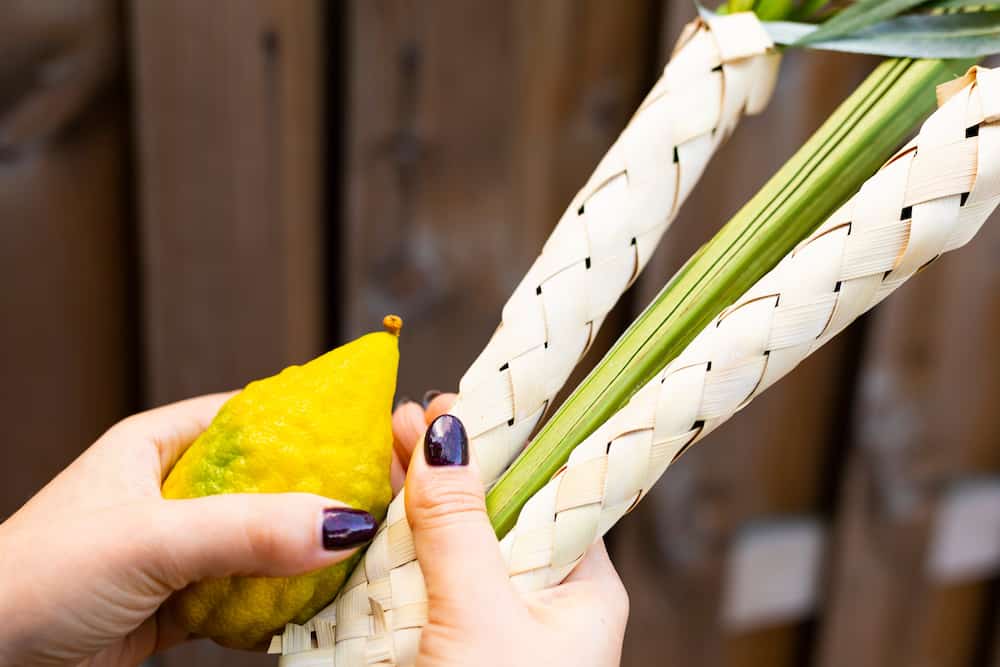What are the Four Kinds for Sukkot?

Everyone knows the phrase “Lulav and Etrog”, but do we actually know what constitutes the Lulav? What species are chosen to create our sanctified tool in helping us reach G-d?
Every day starting from the 15th of Tishrei to the 21st of Tishrei, we shake the Lulav and Etrog (except for Shabbat). The holy plant species are as follows: two willows (arava), a palm branch (lulav), a minimum of three myrtles (hadas), and one citron fruit (etrog).
The first three plants are bound together, technically you can use any material to bind them together, but a Lulav leaf is usually used so there is no other material separating the species from coming together. The unity of the plants is symbolic of unifying the Jewish people. There should not be another element hindering the perfect combination and union of the various plant species. In addition to this, they cannot be damaged! You need to double-check with your Rabbi to check that the leaves are in good condition and kosher.
There are many factors that separate Jews from one another, different sections of Judaism not fully respecting one another is an example of this. Just like the book “The Chosen”, written by Chaim Potok, which was produced into a film in 1981 (highly recommend), these differences are filtered out until the most important thing is left: simply being a Jew. The book discusses the tension between Modern-Orthodox Jews and Hassidic Jews, and how two children from each of these categories ultimately become best friends, initially struggling with their differences but then overcoming them. Once we become humble internally and externally, we are able to see this message crystal clear.
The mitzvah and obligation is for men, but women are encouraged to participate. In order to complete the action, you place the Lulav in your right hand, and if you are a lefty then place it in your left. The spine of the Lulav should be facing you, and you start off by positioning your body to face east. To begin, you say the bracha “Blessed are You, L‑rd our G‑d, King of the Universe, who has sanctified us with His commandments and commanded us regarding taking the lulav”. Afterward, you bring the Lulav and the Etrog together, uniting them, and the mitzvah is completed!
Even though fulfilling the mitzvah is accomplished at this point, you continue with the rest of the actions. You shake the Lulav and Etrog in six directions: north, south, east, west, up, and down. This symbolizes that G-d is everywhere all at the same time, watching over his chosen people. Even when doubting the whereabouts of G-d, this is a reassurance that He is always present.
This traditional movement should take place outside, and then again in Synagogue. The entire concept of Sukkot and the shaking of the Lulav and Etrog is to connect the Jewish people. We are all different, but at the end of the day, we are rooted in the same tree. This holiday is about humbling yourself in front of your fellow Jews, and celebrating G-d!

